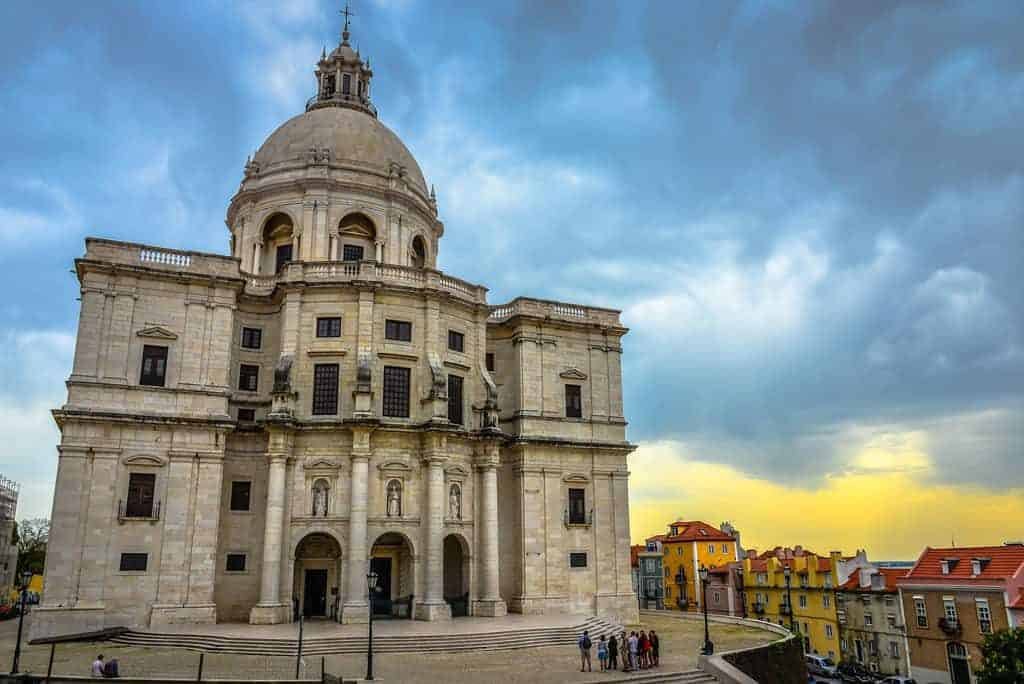
In the previous article I started by talking about the easternmost part of Lisbon and we will now follow this strip along the Tagus River until we reach almost the center. Leaving the modern Nations' park, with a mix of new and tall buildings, commerce and many offices we will continue parallel to the river until we enter Marvila, which is the largest of the four parishes and probably where more new things are happening at the moment, then we will talk about the parish of Beato , a corner of the parish of Penha de França and finally São Vicente (already next to Alfama).
These four parishes have something in common: they have all been somewhat forgotten over time and reveal old buildings (old in the center, it's really old here!), many warehouses and old factories, many of them abandoned, being a more residential area with low housing. Leaving Expo, the best thing to do is take bus 728, which passes through all the areas we're going to talk about today.
Marvila reinvents itself
The Braço de Prata area is the first area after the Expo and where a new high-end housing and commercial development is being built. This will perhaps be the biggest “news” in the area and the one that will possibly have the biggest impact on Marvila. However, in recent years new craft beer bars, trendy and restaurants. With prices per square meter rising in the center and there being an area here that had space and was very close to downtown Lisbon, it's no wonder that companies started to look at Marvila with different eyes. Of course, the most obvious problem is that it is not a fashionable area like Chiado, it does not have monuments like Belém, nor quality commercial buildings like Expo. But the spaces are larger and cheaper and these are two things that always matter. A Silver Arm Factory, a former war munitions factory, is now a cultural center with a restaurant and a bar, and it is between this area and Rua do Açúcar that more trendy restaurants and bars have appeared. What attracted the most attention was the arrival of brewers – Dois Corvos, Lince and Musa – for offering an innovative concept of craft beer. It's worth discovering this part of Marvila if you like something calmer, otherwise you'll feel like a fish alone in the middle of a huge aquarium.
Beato, Penha de França and São Vicente
We enter the next parish, Beato and also a little bit of Penha de França which stretches practically from Avenida Almirante Reis to the river. If it were a conventional article I would look for something to tell you, but this is an unconventional guide and being short and direct I think we can move on. If you understand me!?

The National Tile Museum deserves to be highlighted, let's be fair, but I want to go to São Vicente now because it is in this smaller parish that you can find some “pearls” that I really like. It's right at the end of this parish, after passing the container area, yes it's ugly and it's a quick pass, that we arrive in Santa Apolónia where everything changes. To begin with, there is the trendy Lux nightclub that still attracts odes from people, the Santa Apolónia Station building which is the terminus of the northern line (train connection between Lisbon and Porto) and, in particular, the riverside area that is being transform because of the new cruise ship terminal. A lot of work is being done here, which is starting to bear some fruit and the area is becoming very interesting. The Military Museum is right in front of Santa Apolónia, but it is by going up through alleys and alleys, perhaps the easiest way is going along Rua Museu da Artilharia and Calçada do Cascão, that we reach the National Pantheon and the Church of São Vicente. There will be a lot of information available online for you to find out more about these two monuments, but the idea I want to convey is that this entire area can be explored on foot and should not be forgotten. Normally tourists always start in Alfama or Chiado, but this will be an excellent starting point too.


In the next article we will look at the parishes of Santa Maria Maior and Misericórdia, possibly the two most visited areas of Lisbon that you cannot miss. I'm going to give a generic overview of this area of Baixa so you can get an idea of what you can see here. And look, it's a lot. Between viewpoints, churches, squares and shops, it will be difficult to highlight something specific, so I will write a more comprehensive text.